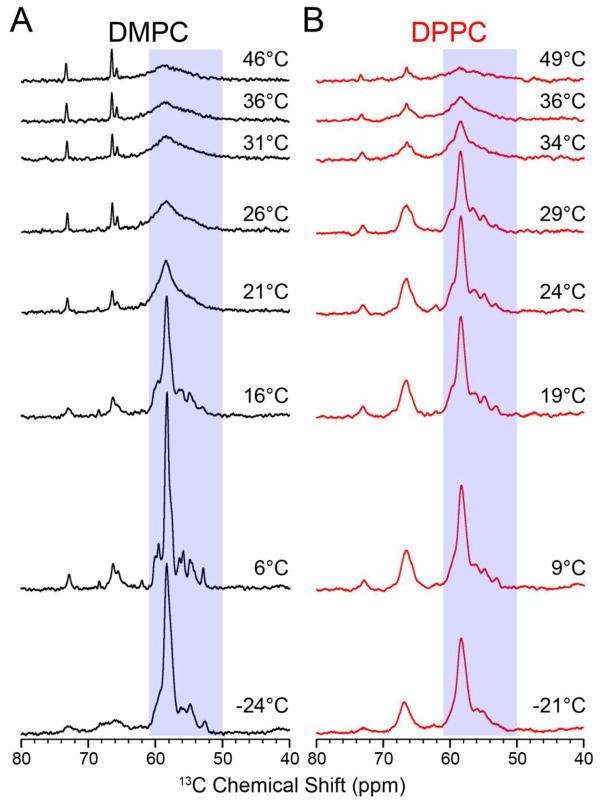Figure 3.
1D 1H-13C cross-polarization spectra of the temperature titration with EmrE in (a) DMPC and (b) DPPC. The boxes indicate the region used for intensity integration (50–61 ppm) shown in Figure 4. The main phase transition temperatures determined from the DSC data were 22.7 °C and 40.7 °C for DMPC and DPPC proteoliposomes, respectively. As the temperature increases, the NMR signal becomes broader due to increased uniaxial rotation. At the value of critical membrane fluidity (corresponding to ~5%), the signal intensity drops rapidly as the protein’s uniaxial rotation enters the intermediate motional regime.

